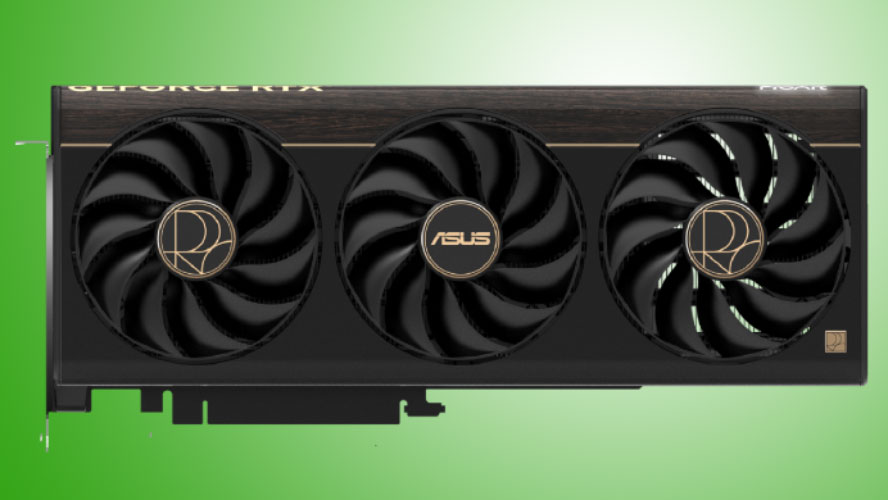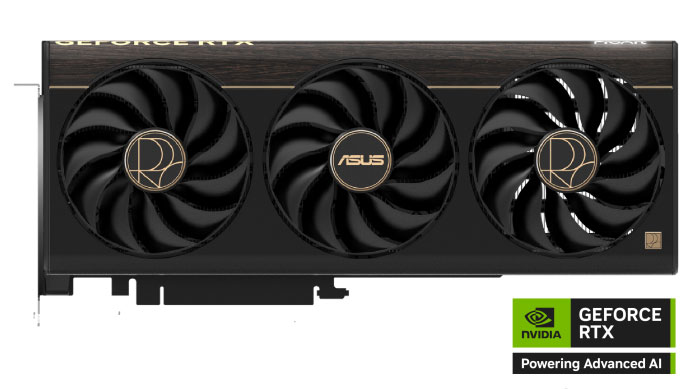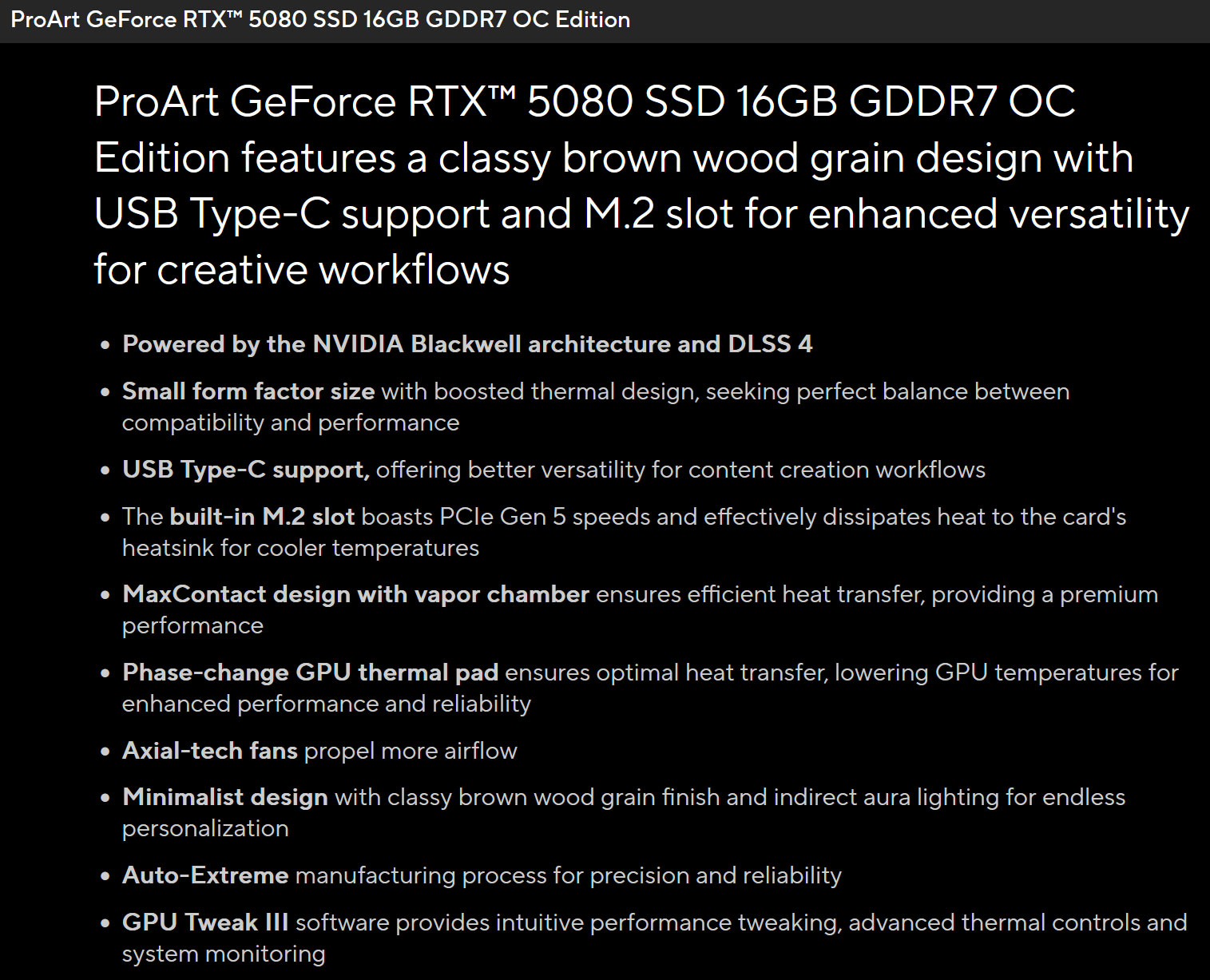Asus RTX 5080 ProArt comes with a wood grain finish and M.2 slot option
All four SKUs feature USB Type-C connectivity, too.

Asus has brought the joy of wood grain to its graphics card lineup. The PC and components giant has just taken the wraps off its first RTX 50 graphics cards to swell the ranks of the ProArt family, and they all feature “a classy brown wood grain design.” Moreover, this first quartet of RTX 50 ProArt cards is the firm’s “first to offer USB Type-C support for enhanced versatility for creative workflows.” Two of the models also sport an M.2 slot, which will please some users, as long as Asus’s price premium isn’t too ambitious.

The most desirable model among the new Asus ProArt GeForce RTX 5080 models is the OC Edition with M.2 SSD slot. We’d probably rank the non-overclocked M.2 slot packing card next, followed by the ProArt GeForce RTX 5080 OC, and then the ‘vanilla’ but still wood effect finished and USB Type-C port packing model.
Regular readers will be well aware of the key attractions of the Nvidia GeForce RTX 5080, and if not, please check out our extensive review and consider its place among the best graphics cards on the market in mid-2025. Asus has two new ProArt cards, which will offer ‘reference’ specs, and two with an overclock applied to the GPU. We can’t drill down on those figures, though, as Asus hasn’t added the specs to the product pages at the time of writing.
Like a log in your PCIe slot
Probably the more important differentiation here is with the cooler, M.2 slot, and USB Type-C connectivity, though. The Asus ProArt design looks a lot like a reskinned Prime card, but here it has ProArt motifs and the headlining wood grain effect along the top. Like you’ve installed a log in your GPU slot.
Asus’s cooling system is listed as “2.5 slot small form factor size,” but it isn’t low-profile or similar. The triple spinner design is taller than the PCI bracket and probably approaches 300mm in length. Asus says the cooler features a MaxContact design with vapor chamber, and there’s a phase-change GPU pad between the cooler and the GPU to help keep this card cool, calm, and collected.

Moving along to the other special features here, all four new ProArt RTX 5080 models also feature USB Type-C support, which is great for a growing number of monitors and devices.
If you choose one of the models with an M.2 slot, you can benefit from up to PCIe Gen5 speeds. Moreover, the ample cooling of the graphics card should also cover the needs of any toasty SSD you might equip.
Stay On the Cutting Edge: Get the Tom's Hardware Newsletter
Get Tom's Hardware's best news and in-depth reviews, straight to your inbox.
Wood be welcome
Some retro tech enthusiasts may be quite pleased to see the return of wood-effect finishes to tech. Whether it comes in the form of actual wood construction or parts, wood veneers, or even just wood-effect plastics – the look and feel can bring back fond memories of old tech and gadgetry like TV, Hi-Fi, and even games console systems.
With Asus introducing these ProArt designs, and knowing there are already numerous wood-finish cases around, the dreams of an all-wood finished PC are getting nearer. Wood finish keyboards and mice have been a thing for quite some time, and we also know there are wood finish CPU air coolers from DeepCool at Computex. A wood completist might still long for wood-finish motherboards, RAM, and storage. Finally, a wood-bezel monitor shouldn’t be a big challenge to DIY-frame, if no firm steps forward with some lignin-lover options.
Follow Tom's Hardware on Google News to get our up-to-date news, analysis, and reviews in your feeds. Make sure to click the Follow button.

Mark Tyson is a news editor at Tom's Hardware. He enjoys covering the full breadth of PC tech; from business and semiconductor design to products approaching the edge of reason.
-
ejolson Wood grain finish to GPUs and computer cases seems even more practical than the woody station wagons built during the 60's and 70's.Reply -
Sluggotg Reply
I grew up riding in those!ejolson said:Wood grain finish to GPUs and computer cases seems even more practical than the woody station wagons built during the 60's and 70's.
I like the idea of making fun looking video cards and I like the M.2 slot. It is all meaningless because they will make a small number of them and the Vast Majority of people will never have a shot at buying one. With the insane scarcity of all the higher end 3K, 4K and 5K series chips from Nvidia, it automatically makes them a non entity with consumers. I want one, but I won't pay thousands of dollars above list to buy from scalpers. Even the intel B850 is rare. I have never seen one for sale at list price.
Even considering they prioritize the higher profit chips, it still seems like they could make more. The extreme shortage of fab facilities and the demand for anything that has "AI" attached to it, has caused this, (as we all know). It has been many years of video card shortages. There does not seem to be any relief in the next 4 or 5 years. (It takes a long time to build a Fab). -
abufrejoval With people going OCD over the looks of their hardware inside those cases, I wish I could get a special discount for how little I care about how things look inside the boxes hidden out of view under the table!Reply
My first couple of PC generations where not only desktops, but would open by lifting a cover (Apple ]desktop PCs): you needed the quick inside access to the hardware, because re-arranging things was pretty near a daily matter. And who would want to bend down to swap floppies?
With the rise of the hard disk came a long line of PCs that still needed front access e.g. for media swap and backup. Yes, the first backup medium was still floppies, hard to imagine with 30TB drives. But then came long lineages of tape drives, removable magnetic, optical or magneto-optic drives, often even a mix of all of the above: that tower front was a loading ramp not a store front!
But PCs were also a pile of whirring drives and later fans making noises, nothing you'd want to have close to your face and ears and in any case the action was always on the screen: do those case maniacs also use transparent loos and piping in their homes?
I guess I preferr to think of them as chrome and bling people, anyone who'd put chrome on wheel covers or engine headers or a compressor on their V8 might also bling their CPUs and install water cooling: none of which is anything I'd spend a penny on, either.
I just need to be sure my engines are working and will continue to do so for hours at top speeds while my main visual concern is to keep the main window transparent enough to avoid oncoming danger and the breaks fit enough to decelerate from 240km/h every time one of those idiots from Belgium or Denmark forgets he's in Germany and pulls into my lane at 100km/h to pass a track on the Autobahn.
So I'll test, tune and swap the parts until I'm sure the system won't fail when I need it for work and the cases reflect that constant rework in and out with scratches, bangs and bents as an unavoidable part of use. Cables get ordered by the frequency of their removal, but I'll try to respect airflow needs, never shall there be water in my PCs.
Yet, with the need to cool 600 Watts and counting, it's getting very hard to get cases that still offer a loading ramp front for my hard drives and swappable media, yet also pump enough air from bottom front to top back. Actually most of my systems were more of a side blower chassis and top blower CPUs design, while the tower top was where you put your feet, sat your girl-friend or your kids, when those towers were still built like a tank and even I could stop on it to change a light bulb (no longer a thing, either, with LEDs).
With stories like this I feel like being one of those coal dust face guys in a black and white photograph, who shoveled coal in locomotives or steamships... and the worst is dark mode!
Why on Earth would people want to look at garish letters on a black background as if it was 1980, when they can have wonderfully crafted letters without any visible pixels at the quality of printed paper wall-to-wall for what seems like peanuts compared to a 20" tube monitor from yore?
Might they in fact bling their cases to relax their eyes from DARK MODE?